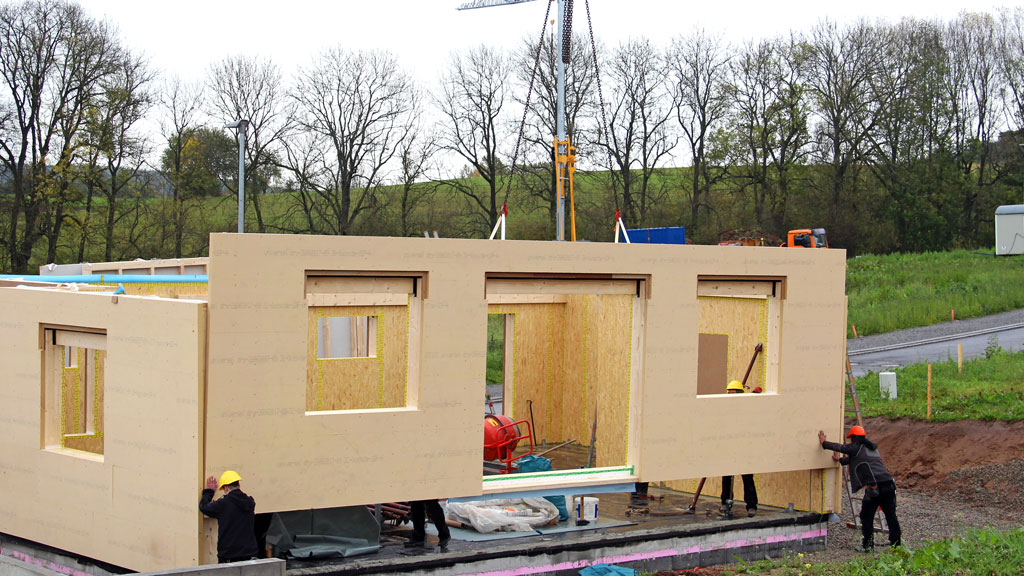On Thursday, Feb. 16, visitors to Buildex Vancouver 2023 can learn about off-site wood prefabrication by attending the presentation entitled The State of Prefabrication in Canada.
The presenter is Craig Mitchell, founder and principal of Blackbox Offsite Solutions Ltd. in Vancouver. Mitchell is an off-site construction consultant with more than 25 years of experience in the field and an enthusiastic evangelist of that method of building.
Although many people think of prefabricated wood construction as a recent innovation, it was first used years ago, Mitchell says.
Some of the earliest known prefabricated structures were developed by BC Mills around the turn of the 20th century. They were shipped across Western Canada where they were used as banks and portable classrooms.
Wood prefabrication has matured since then.
Today there are three main types in Canada – mass timber, panelization and volumetric modular construction.
Mass timber has been receiving the most attention because of its sustainability benefits as well as the well-publicized technical and market development efforts to encourage its use.
Although mass timber’s production capacity and market penetration in Canada lags other countries, market acceptance has been growing.

Mitchell says mass timber and other forms of prefabrication can help mitigate some of the challenges Canadian construction is facing.
One of them is a serious and growing shortage of skilled labour.
The Canadian construction industry will need to recruit, train and retain just over 309,000 new workers in the next decade.
Although it has been trying to make construction more attractive to young people who are starting to think about a career, its efforts have met with mixed success.
As a result, the Canadian construction industry is not expected to have enough productive labour to build everything the country needs.
Construction in Canada needs to take a new approach, says Mitchell.
The industry must innovate and look to new technology and modern methods of construction if we are to have a chance of solving the crisis.
With the current skilled labour shortage and a drop in new immigration to Canada, the problem of productivity will not be solved without looking at it differently.
Many other countries adopted offsite construction before Canada.
In the past 20 years the United Kingdom, Japan, Sweden, Germany and the Netherlands have all made wide use of prefabrication technology, with Japan and Sweden at the forefront.
“Those countries have higher energy efficiency requirements than Canada does,” says Mitchell. “And there’s established market acceptance there. Consumers know all about prefabricated buildings and what their benefits are. In North America prefab is still quite new.”
Mitchell says there are many opportunities to increase the use of prefabrication in Canada.
For example, the growing emphasis on sustainability has led to a greater interest in finding new ways to evaluate and reduce the environmental impact of building construction.
If Canada is to embrace offsite prefabrication and the industry is to succeed, it needs to move from the early adoption stage to an industry that is supported by the greater majority.
“Everyone in Canada is interested in mass timber, but it’s only one form of offsite construction,” says Mitchell. “We need to support other kinds, too – panelization and volumetric modular construction.”
To help promote prefabrication, a concerted marketing and communications campaign is needed.
“We need to get the whole industry pushing a best practices guide from design to commissioning,” says Mitchell.
Increasing the use of prefabrication in Canada is a long-term project.
“This is not something that will happen in five years or even 10 years, but applying lessons learned from other areas of the world and adopting recommendations from Canada’s offsite construction thought leaders and industry stakeholders will begin to solve our issues related to construction productivity, sustainability, and affordable housing,” he says.
Mitchell says his presentation is aimed at architects, owners and contractors.
A 45-minute talk will be followed by a 15-minute question-and-answer session.
Participants will learn:
- The current landscape of prefabrication and the threats the industry faces;
- some of the best practices from the field and how to best undertake a prefabrication project;
- the five current drivers of prefabrication adoption;
- the current challenges, constraints and barriers to adoption;
- an overview of the recommendations of a recent report Mitchell prepared for Forestry Innovation Investment; and
- areas for further study.











Recent Comments
comments for this post are closed